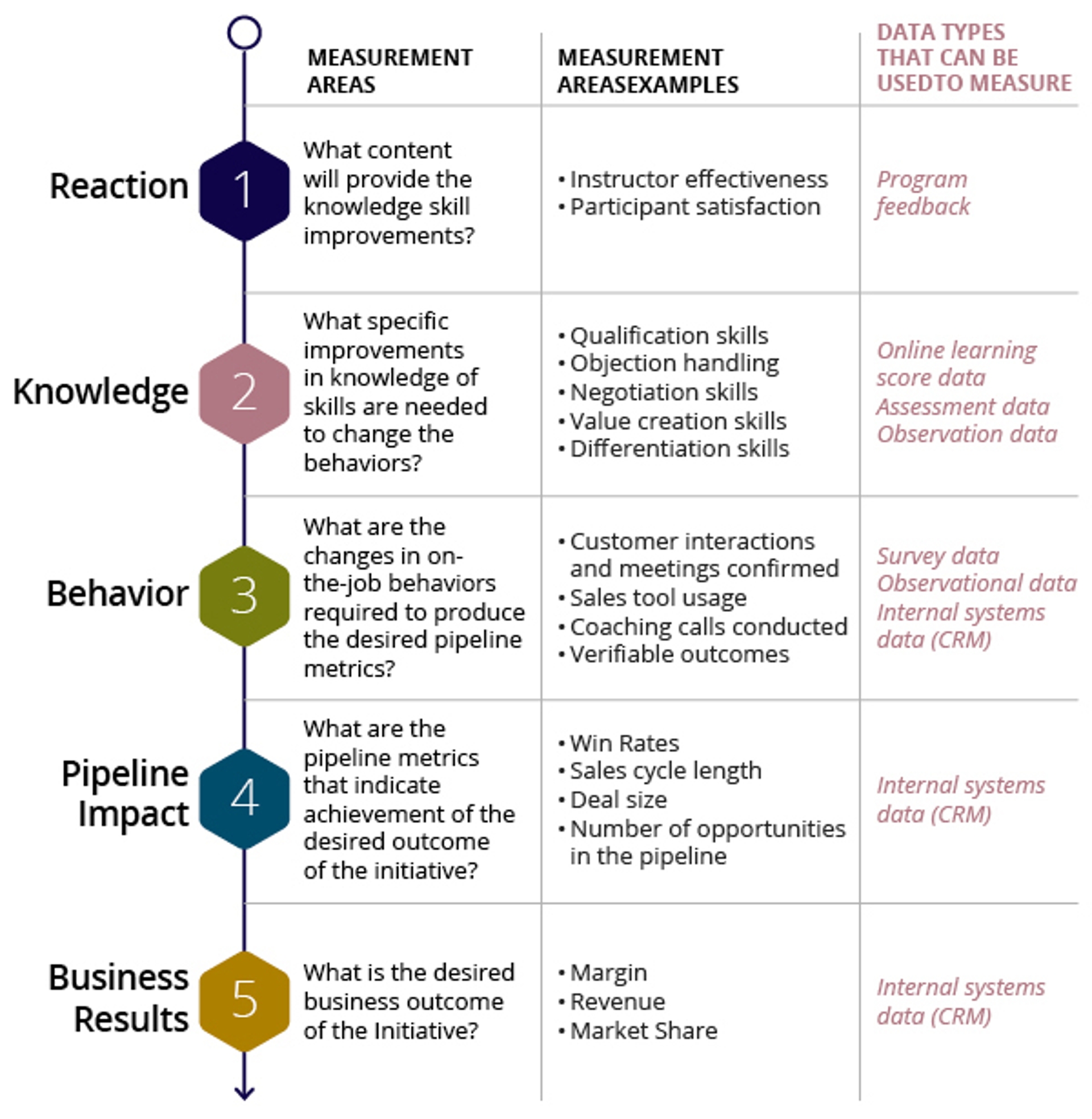
Measurement at All Levels of Performance
Discover a measurement approach that ensures your training investment delivers results.
Measuring Sales Training Effectiveness in the Real-World
Richardson's approach to measuring sales training effectiveness is based on our goal of delivering solutions that work for your team in the real world. That means we measure improvement throughout your team’s sales transformation, focusing on more than lagging indicators that take time to observe. We measure sales training success throughout the training process to make sure we’re on track to hit the final targets that matter most to your organization.
Our sales training measurement solutions clearly identify and measure performance against specific KPIs at each distinct stage in your team’s learning journey. This lets us know early and often what works and what doesn’t and ensures that we will deliver the final outcomes your company needs.
Stages of Sales Training Measurement
To make sure we’re tracking the right metrics at the right time your team’s progress is measured following a variation of the Kirkpatrick Model, a globally recognized method of evaluating the results of training and learning programs.
This ongoing measurement approach works because it assesses the effectiveness of both formal and informal training methods and rates them against four levels of criteria: reaction, learning, behavior, impact, and results.
The five levels of the model are:
- Reaction: measures how the initial training experience received
- Knowledge: measures the extent to which sellers are learning new practices and improving their skills
- Behavior: measures changes in the behavior of reps in the field
- Impact: measures the change in business outcomes resulting from training
- Results: measures the ROI delivered by the solution
The graphic below illustrates the data we commonly use to measure your team’s improvement across all five levels of the measurement model.

The key to the success of this approach is it connects what people are learning to how skills are progressing by looking at a number of inputs like, participant feedback, formal assessments, structured observations, tracked coaching conversations, tool utilization, and financial data.
Measuring Your Team’s Success
Precisely determining the metrics we will use and how these will be reported and visualized will be a collaborative process that the Richardson team will guide your company through in the early stages of our engagement together.

eBook: A Guide to Measuring Sales Training Effectiveness
Explore trends affecting the manufacturing industry
Download
Our Impact
900Global Clients
3.5M+Individuals Trained
12%5-12% Increase in Revenue
24%Improvement in skill efficiency
35%Increase in knowledge proficiency



